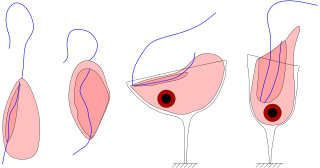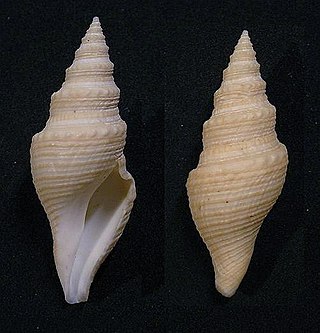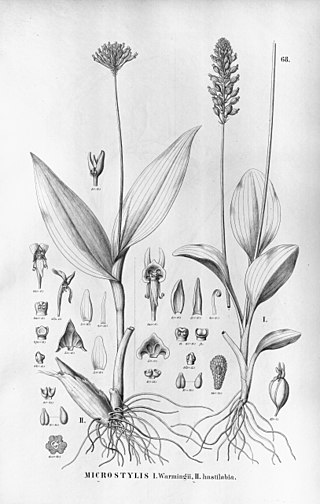
Excavata is an extensive and diverse but possibly paraphyletic group of unicellular Eukaryota. The group was first suggested by Simpson and Patterson in 1999 and the name latinized and assigned a rank by Thomas Cavalier-Smith in 2002. It contains a variety of free-living and symbiotic protists, and includes some important parasites of humans such as Giardia and Trichomonas. Excavates were formerly considered to be included in the now obsolete Protista kingdom. They were distinguished from other lineages based on electron-microscopic information about how the cells are arranged. They are considered to be a basal flagellate lineage.

Discicristata is a proposed eukaryotic clade. It consists of Euglenozoa plus Percolozoa.

A bikont is any of the eukaryotic organisms classified in the group Bikonta. Many single-celled and multi-celled organisms are members of the group, and these, as well as the presumed ancestor, have two flagella.

Retaria is a clade within the supergroup Rhizaria containing the Foraminifera and the Radiolaria. In 2019, the Retaria were recognized as a basal Rhizaria group, as sister of the Cercozoa.

The SAR supergroup, also just SAR or Harosa, is a clade of Eukaryotes that includes stramenopiles (heterokonts), alveolates, and Rhizaria. The name is an acronym derived from the first letters of each of these clades; it has been alternatively spelled "RAS". The term "Harosa" has also been used. The SAR supergroup is a node-based taxon. The TSAR clade also includes the Telonemids.

Vitekorchis excavata, also known as the hollow oncidium, is a species of orchid native to the Neotropics.

Jakobids are an order of free-living, heterotrophic, flagellar eukaryotes in the supergroup Excavata. They are small, and can be found in aerobic and anaerobic environments. The order Jakobida, believed to be monophyletic, consists of only twenty species at present, and was classified as a group in 1993. There is ongoing research into the mitochondrial genomes of jakobids, which are unusually large and bacteria-like, evidence that jakobids may be important to the evolutionary history of eukaryotes.

Histiona is a genus of Excavata.

Diaphoretickes is a major group of eukaryotic organisms, with over 400,000 species. The majority of the earth's biomass that carries out photosynthesis belongs to Diaphoretickes.

Bathytoma is a genus of deep-water sea snails, marine gastropod mollusks in the family Borsoniidae.
Andalucia is a genus of jakobids.
Pilomecyna is a genus of longhorn beetles of the subfamily Lamiinae, containing the following species:

Malaxis excavata is a species of orchid widespread across much of Mesoamerica and South America from Mexico to Argentina. It has green flowers in a flat-topped array.
Pilomecyna flavolineata is a species of beetle in the family Cerambycidae. It was described by Breuning in 1957.
Pilomecyna griseolineata is a species of beetle in the family Cerambycidae. It was described by Breuning in 1957.
Pilomecyna grisescens is a species of beetle in the family Cerambycidae. It was described by Breuning in 1980.
Pilomecyna longeantennata is a species of beetle in the family Cerambycidae. It was described by Breuning in 1942.
Pilomecyna serieguttata is a species of beetle in the family Cerambycidae. It was described by Fairmaire in 1899.
Wurmiella is an extinct conodont genus.









